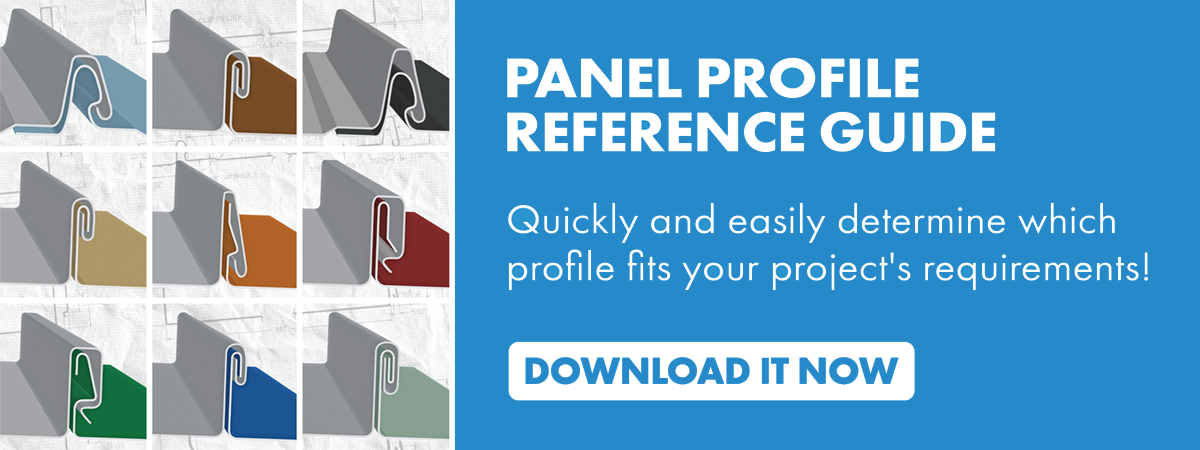Metal roofing design and installation can be very complex, and contractors, designers, and homeowners must pay attention to many small details, from local codes and regulations to adequate testing standards for your products.
Wind uplift testing is especially important, as it lets you know how much force a particular roof can withstand and how it will hold up in certain environments. Without understanding how to apply wind uplift testing data to your project, you may expose your metal roof installation to safety hazards and inept products.
With years of experience helping contractors and architects get their metal roof designs right, Sheffield Metals International (SMI) understands how to build a roof that meets the threshold for wind uplift testing requirements.
We provide our customers with high-quality metal coils, sheets, and metal roofing accessories they can trust. Along with providing products, we help educate those in our industry on various topics to make their metal roofing projects safer and even more effective.
In this article, we’ll discuss wind uplift testing in detail. We’ll start with defining what a wind uplift test is and how it works. From there, we’ll go through the three main types of uplift tests: UL 580, UL 1897, and ASTM E 1592. We’ll also cover how the components and accessories of a metal roofing system come into play during these tests, and outline the various ways a roof may fail during testing.
By the time you’re done reading, you’ll have an in-depth understanding of wind uplift testing.
What Is a Metal Roof Wind Uplift Test?

To put it simply, a wind uplift test measures how much wind pressure a roof can withstand. Some of these tests may be designed to take a roof to failure, while some will measure a roof at a certain pressure to see how it holds up.
The key purpose of a wind uplift test is to ensure that a roof meets the minimum safety requirements for a particular area. It will inform manufacturers, suppliers, designers, building owners, and homeowners about the durability of their roofs in relation to wind pressure. If you’re not familiar with what wind uplifts are, feel free to check out our article and accompanying video on the topic below:
Wind Uplifts: What Are They and How Do They Affect Standing Seam Metal Roofs?
How Do Metal Roof Wind Uplift Tests Work?
Uplift testing results in two pressures — an ultimate pressure and a design pressure. The ultimate pressure is the highest force a roof withstood before failure, while design pressure accounts for a 50% safety factor by dividing the ultimate pressure in two.
All pressures are measured in pounds per square foot (psf). So, for example, if a roof fails at 100 pounds per square foot of ultimate pressure, that equates to a design pressure of 50 pounds per square foot.
Wind uplift tests will differ by the minimum pressure being measured and what specific metrics the roof is being judged upon. In the next section, we’ll get into the specifics of different types of wind uplift testing.
Types of Metal Roof Wind Uplift Tests

For the type of roofing that Sheffield Metals deals with, we most often work with a few specific wind uplift tests.
Two governing bodies provide a standardized makeup for these wind uplift tests. The two governing bodies are the Underwriters Laboratory (UL), which provides the UL 580 and UL 1897, and the American Society for Testing and Materials (ASTM), which provides the ASTM E 1592. The UL 580 and UL 1897 are an architectural panel test, while the ASTM E 1592 is a structural test.
First, we’ll look at the UL 580 and UL 1897 tests.
UL 580: Standard for Safety Tests for Uplift Resistance of Roof Assemblies
The UL 580 test is designed for roofs with a solid substrate. This test includes three different phases: the UL 30, UL 60, and UL 90, which each last for 120 minutes. These numbers — 40, 60, and 90, don’t correlate to specific measurements but rather signify what part of the test you’re at.
For these tests, a ten-foot by ten-foot specimen is used, which will be used in each iteration, taking on more and more strain throughout the process. The test will simulate both the positive, pushing force on the roof’s underside and the negative, pulling pressure exerted on the top side of the roof from wind. It will also simulate these forces at the same time, replicating a bouncing effect that wind forces may cause.
The ten-by-ten specimen will be taken through each iteration, and once it’s passed UL 90, the test is over. At Sheffield Metals, the UL 90 is the minimum test standard for anything that’s going to be installed.
Once the UL 580 is completed, that same specimen will be used in the UL 1897.

UL 1897: Standard for Safety Uplift Tests for Roof Covering Systems
For some projects, something more intensive than a UL 580 will be needed — which brings us to the next wind uplift test: UL 1897.
The UL 1897 is a continuation of the UL 580, with the same testing machine used as in the UL 580. In this test, however, the goal is to take the specimen to failure. The same specimen used in the UL 580 will be tested to see how much pressure it can take before it breaks.
The positive pressure will remain constant for this test, while negative pressure is increased in ten to 15-pound increments.
The specimen must sustain those pressures for one minute before bumping to the next highest pressure.
Aside from seeing how much pressure a roof can take before it fails, one can also gain insights into the actual mode of failure. Roofs vary based on how their panel systems work, their panel design, and what type of substrate they are attached to, which means the mode of failure will also vary widely. This can range from disengaged snap-locks, to loose clips, to kinks in the seam of a panel.
It can be very helpful to see how a roof fails and measure how it holds up in various environments. Understanding how a roof fails will help designers and contractors speak with their clients and make more informed decisions on the right roof for specific situations.
While the goal of the UL 1897 is essentially to take a specimen to failure, sometimes the test machine will max out and won’t be able to raise the pressure any higher. In these cases, the test is still over.
For a test that measures the structural stability of a roof, the ASTM E 1592 will be utilized.

ASTM E 1592: Standard Test Method for Structural Performance of Sheet Metal Roof and Siding Systems by Uniform Static Air Pressure Difference

The panel tested for an ASTM E 1592 test is a structural panel — in other words, it’s the only thing separating a building from the outside elements. In most cases, the panel will be tested over steel purlins, with different spacings measured just like you would for clip spacings.
Typically, the testing will involve a panel over purlin spans of one foot and five feet, and the engineers performing the tests will provide different design pressures for the spacings in between.
One of the main differences between the UL 580 test and the ASTM E 1592 test is the size of the test chamber, 12’x24′. This test requires certain attachments for the panel to be valid, so the specimen may be quite large.
The ASTM E 1592 does have many similarities to the UL 1897 — the main goals of the ASTM E 1592 are to take the roof to failure, to gain insights into the failure mode, and to figure out the ultimate pressure and the design pressure. This test also uses a combination of positive and negative pressure to create various forces on the test specimen to see how it holds up.
Remember that even if the resulting design pressure logically passes the UL 90 test during this test, that doesn’t equate to a UL 90 test being done. The tests are from two separate governing bodies, and in order for the materials to pass each, one will need to get them done separately from the correct testing provider.
Also, remember that these tests are specific to the specimens used and the components and accessories attached to them.
What Is the Importance of Components and Accessories in Metal Roof Wind Uplift Testing?

Metal roofs are complex systems. There are various parts and accessories that all make up a robust, durable roofing system. Because of this intricacy, it’s important to note that these tests only apply to the products you test and the specifications to which they are installed. Only the specific clips and fasteners, for example, that are used in the test are relevant for the ultimate and design pressures produced.
Assigning the same pressure measurements for different accessories not used in the test could open up your roofing project to safety hazards. The same goes for clip spacings, panel profiles, panel gauges, panel widths, and deck substrates.
Remember that the test is the minimum requirements needed for system installation. For example, if you test with a 24-inch clip spacing, you can install them closer than that but not farther apart. If you test a 24-gauge panel, you can use a 22-gauge panel for your application but not a 26-gauge panel. And if your tested panel is 16 inches wide, you can make it narrower but not wider when you do the actual installation.
Since there are many different variables involved with metal roofing designs, stay aware of the specific products and measurements you’re using.
How Does a Metal Roof Fail in a Wind Uplift Test?

One of the main components of a wind uplift test, and in fact the outcome in a few of these tests, is to take a testing specimen to failure. It’s important to take some time to understand roof failure and to look at a few of the most common ways roofs fail, as this will help you know what to look for during a test and gain insights into the structural integrity of a metal roofing system.
Here are some of the ways a roof may fail during a wind uplift test:
- Seam separation: The effects of the wind uplift test could cause the seams themselves to separate, causing an obvious failure that stops the test.
- Clip disengagement: Disengaged clips are another failure mode of metal roofs. Pulling forces can cause pressure on various clips, forcing them to disengage with the substrate.
- Panel kinks: In some cases, the wind uplift test may produce kinks in a panel, sometimes as small as a quarter. Even though nothing came apart or disengaged, this still counts as a failure, and the test will end.
Roof failures can happen in various ways and with many different components of a roofing system. That’s why it’s essential to find a trusted metal roofing supplier that can offer you high-quality, durable materials that have been accurately tested.
Where Can I Find Reliable Wind Uplift Testing Specs for Metal Roofing Profiles?

Wind uplift can do significant damage to standing seam metal roofs. But by using a system that has been tested to meet the performance requirements of your building and geographic location, you can be confident that your roofing project will hold up against the effects of wind uplift. In this article, we’ve reviewed various wind uplift tests, how they work, and what they measure for.
Now, you may be looking for more information about wind uplifts. Feel free to check out our video series on wind uplifts, or review installation best practices to ensure you’re applying those tested metal roofing products the right way.
You may also be looking at the right products for your metal roof — ones that are rigorously tested for wind uplift and can reliably last in the future. At Sheffield Metals International, we support roofing profiles by providing specs for various engineering tests, including wind uplifts. Feel free to contact our expert team to find the products you need and ask any further questions on wind uplift testing.
